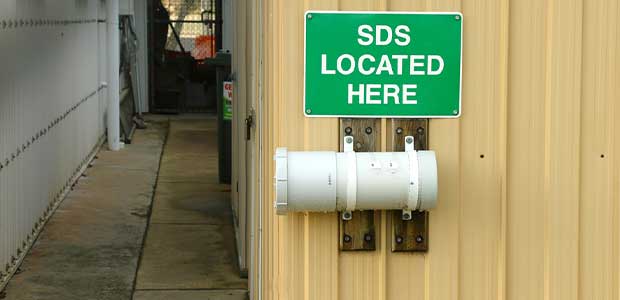
Three Quick Steps to Better HazCom Training
High-level considerations can go a long way to improving your facility’s effectiveness.
- By Phil N. Molé
- Aug 01, 2022
When I worked as a regulatory consultant, I conducted many site visits to evaluate companies for compliance with OSHA’s HazCom Standard. During many of those visits, I’d identify a disconnect. The facility’s management would have many of the right program elements in place, like a mostly complete library of safety data sheets (SDSs) and chemical inventory list, a written HazCom Plan (although not usually site-specific or detailed enough), and an obvious effort to make sure all hazardous chemical containers are labeled. But on the plant floor, when I’d ask an employee how they’d access an SDS, or who they could go to for more information about HazCom management practices, I’d get lots of blank stares and shoulder shrugs in response. The causes of that disconnect were problems in the facility’s HazCom training practices.
Luckily, there are a few high-level considerations that can go a long way toward improving your training’s effectiveness. There are three simple steps you can take to build and maintain a HazCom training program that works.
Train All Employees Who Need It
The first step is to determine which of your employees need HazCom training. Some employers miss this part, because they’re so set on getting the training done, but don’t put enough thought into identifying all employees who need it.
But how do we know which employees need training? It comes down to determining which employees may be exposed to hazardous chemicals at work, because 1910.1200 (b)(2) states that the HazCom Standard’s scope applies “to any chemical which is known to be present in the workplace in such a manner that employees may be exposed under normal conditions of use or in a foreseeable emergency.” In letters of interpretation, OSHA clarified that “foreseeable emergency” would include equipment failure, rupture of containers, or failure of control equipment, all of which could result in an uncontrolled release.
This is a broad scope, and for some employers, it may mean that they need to train all employees, including the temporary and contracted workers at their work locations. You’ll need to make the best decision possible based on familiarity with your operations, the job tasks involved, the associated chemicals, foreseeable emergencies and the possible routes of exposure. Consulting your employees and involving them in this process is a good way to improve the amount and quality of information available.
This article originally appeared in the July/August 2022 issue of Occupational Health & Safety.